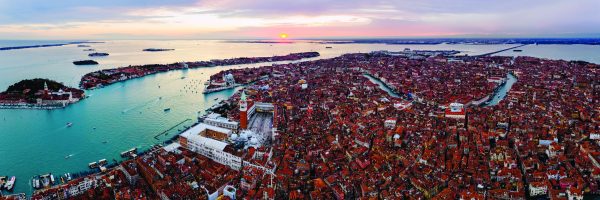Its setting, history and architecture make Venice unique among the cities of the world! Elegance, romance, drama and mystery are abundant in this historic floating city and its lagoon…

Think of Italy and you think of Venice: it seems impossible to have one without the other. The globally-adored city, and a UNESCO World Heritage site since 1987, is considered by many to be the most romantic in the world. It is famous for its architecture, art – and its network of winding canals navigated by, in the absence of cars, the world-famous gondoliers and their gondolas, slipping beneath the arcs of the 400 bridges of the city. To walk the many winding streets of Venice and stand surrounded by the glories of Piazza San Marco, Palazzo Ducale, Santa Maria della Salute and San Giorgio Maggiore (to name but a few) is to be in the presence of one of the highest concentrations of architectural masterpieces that the world has to offer.
The illustrious capital of the Veneto region sits within the Venetian lagoon in the Adriatic area of the Mediterranean Sea. Venice was established a millennium and a half ago to avoid Barbarian invaders on the mainland, with its inhabitants building their refuges on 118 small islands. Thousands of wood piles were driven into the mud and waters of the lagoon to create platforms to provide the foundations for their homes. Ingenuity at its finest, yet also one of the contributing factors towards Venice sinking a millimetre a year.
The very sight of this fragile floating city is remarkable to behold: its buildings a testament to the city’s aspirations for power, wealth and stability against the odds, while its people remain tenaciously and fiercely connected to the waters around them.
Enjoyed this article? Read more like it in our archive.
